'RETOLD' illustrates African American story of struggle, joy at Akron Art Museum
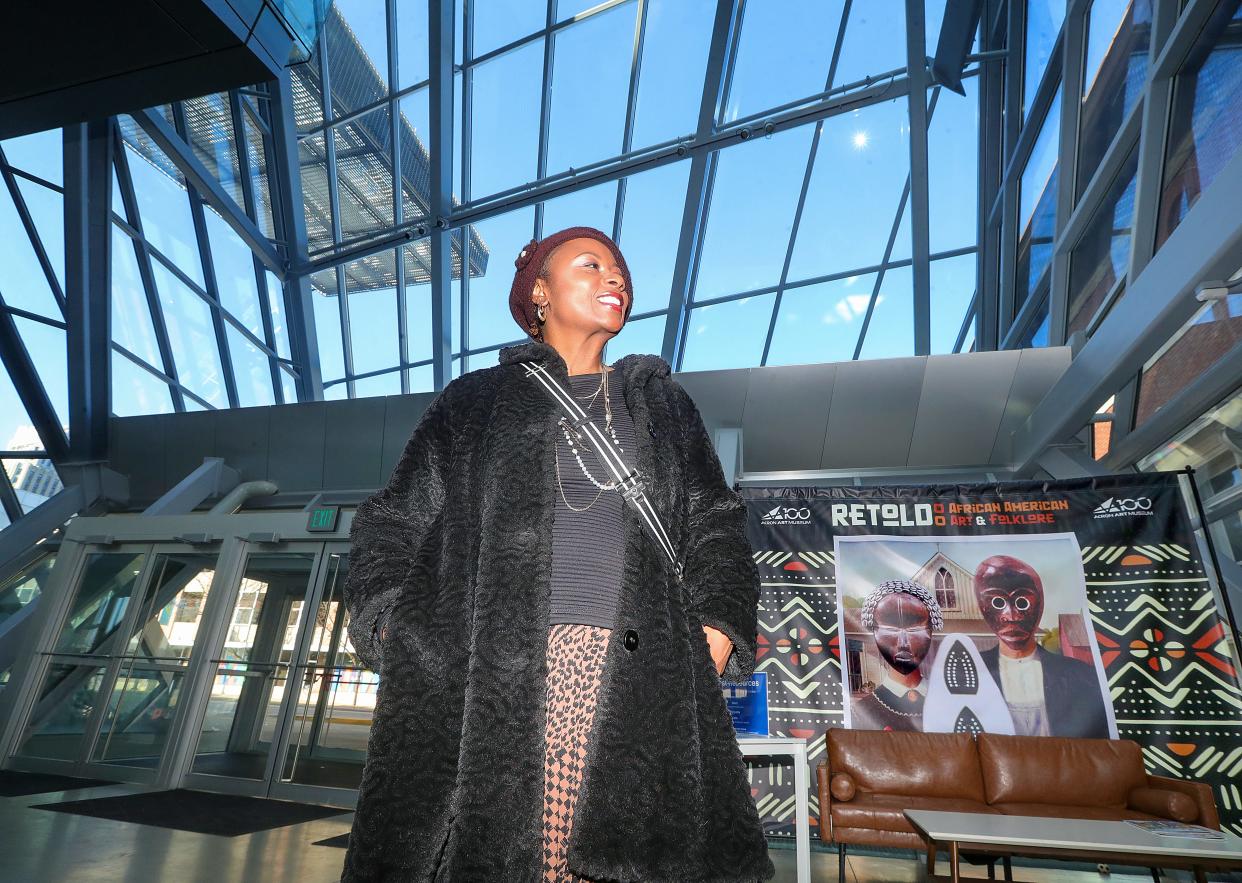
When guest curator Tameka Ellington chose the artworks for the Akron Art Museum exhibition "RETOLD: African American Art and Folklore," she chose only those that had a story she could relate to.
Ellington curated the show from hundreds of African American works on paper from the Cochran Collection, owned by Missy and Wes Cochran of LaGrange, Georgia.
"I went through the whole list and only chose those items that I felt spoke to my soul. If it didn't speak to me, then I didn't choose it," said Ellington, an Akron resident.
The exhibit, which continues through March 24, delves deep into the dichotomy of the African American experience, reflecting on both the struggles and the joys. It features 74 works by 45 African American artists from across the country.
More than 11,000 guests have seen the exhibit since its opening in November. The "RETOLD" artwork hangs on gallery walls painted black and burnt orange, with doorways covered in African mud cloth in vibrant patterns known as bogolanfini.
Ellington organized the exhibit by connecting those works with traditional African folklore, including the folktale "The People Could Fly," which tells a magical story of people in Africa who could fly and later used their power to escape the misery of slavery.
With any artwork Ellington's involved with, she said she always makes sure she says thank you to her African ancestors. In curating "RETOLD," that thanks carried over to the theme of remembering.
"That's what this part of the show was all about, us thanking the ancestors and remembering how the African American experience began in the first place," she said.
Ellington grouped the Cochrans' artworks into four themes: remembering, religion, racialization and resistance.
Black history: Green Book project reveals which Greater Akron spots were safe havens during Jim Crow era
Remembering ancestors of Africa
The remembering theme focuses on remembering the ancestors and traditions of African culture that helped those who were enslaved get through the harshest times.
An untitled 2003 ink on paper work by David Fludd reminded Ellington of the coastal slave mansions, Cape Coast Castle and Elmina Castle, that she saw in Ghana on a 2019 trip. Europeans enslaving the Ghanaians worshipped on one floor, had living quarters on another and imprisoned hundreds of Ghanaians in underground dungeons.
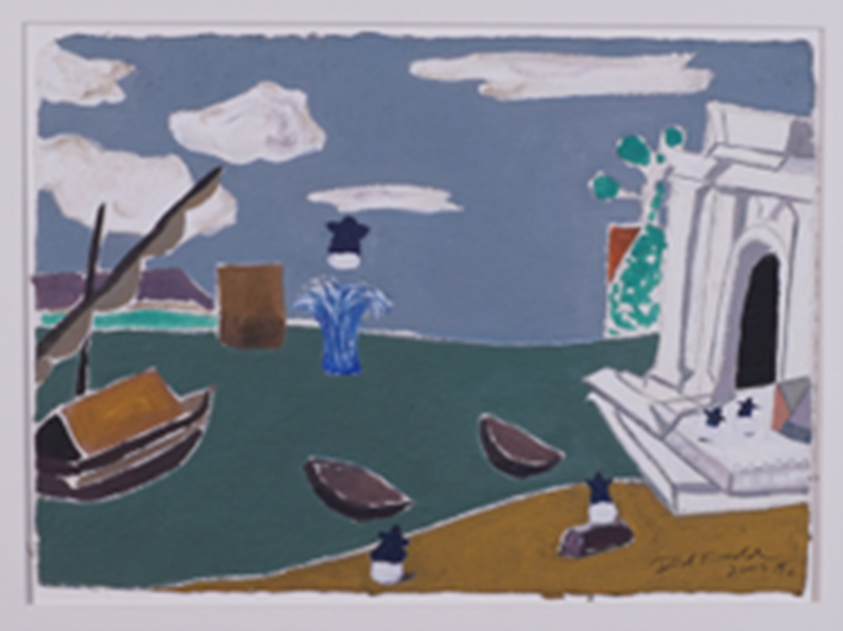
Ghanaians called the castle door the door of no return, the point from which they were loaded onto boats and sold to the Americas in the Atlantic slave trade.
"When our ancestors walked through that door, they would never again see their homeland," Ellington said.
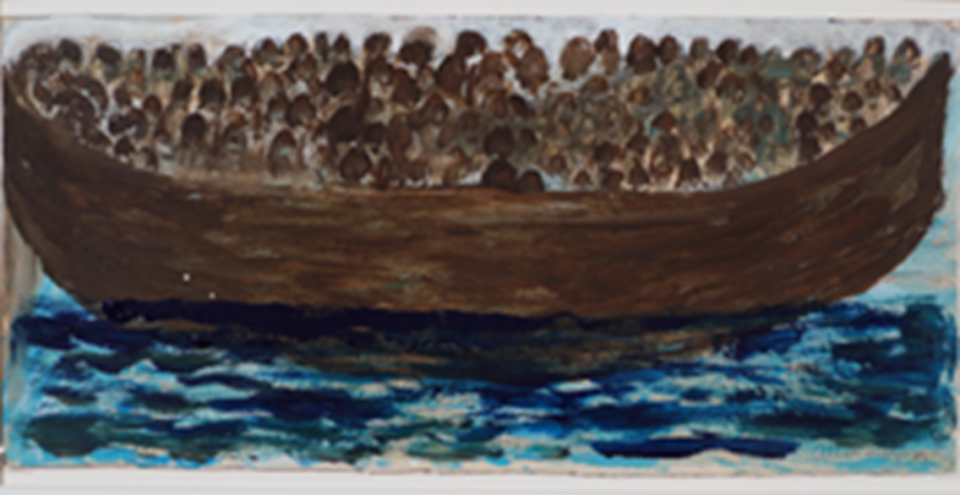
Another ink on paper work by Melvin Edwards depicts chains.
"He wants to make the statement that people, human beings, were never meant to be held in chains. But chains were supposed to be a functional item that we use in our everyday lives, not to hold individuals," Ellington said of the artist.
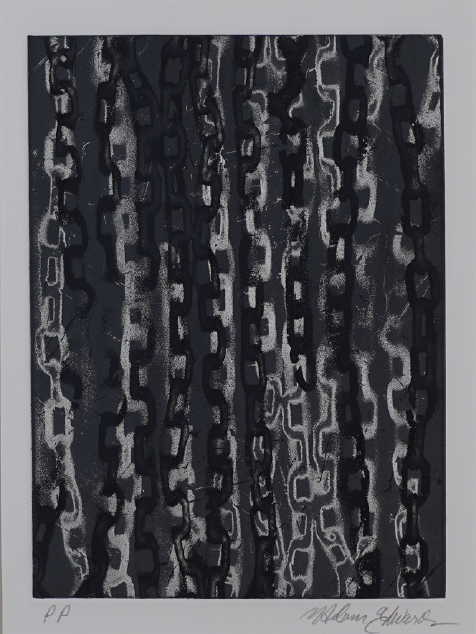
The exhibit's religion theme speaks to those that originated in African culture. That includes West African Vodun, which in Haiti merged with Catholicism to became the religion Vodou, a new-age version of which is spelled Voodoo in New Orleans.
"RETOLD" includes a documentary by the British newspaper The Guardian about how the French demonized the Vodou religion, one of the slaves' greatest assets in fighting the Haitian revolution, as evil. A whole wall of the exhibit is dedicated to artwork depicting Vodou culture and religion.
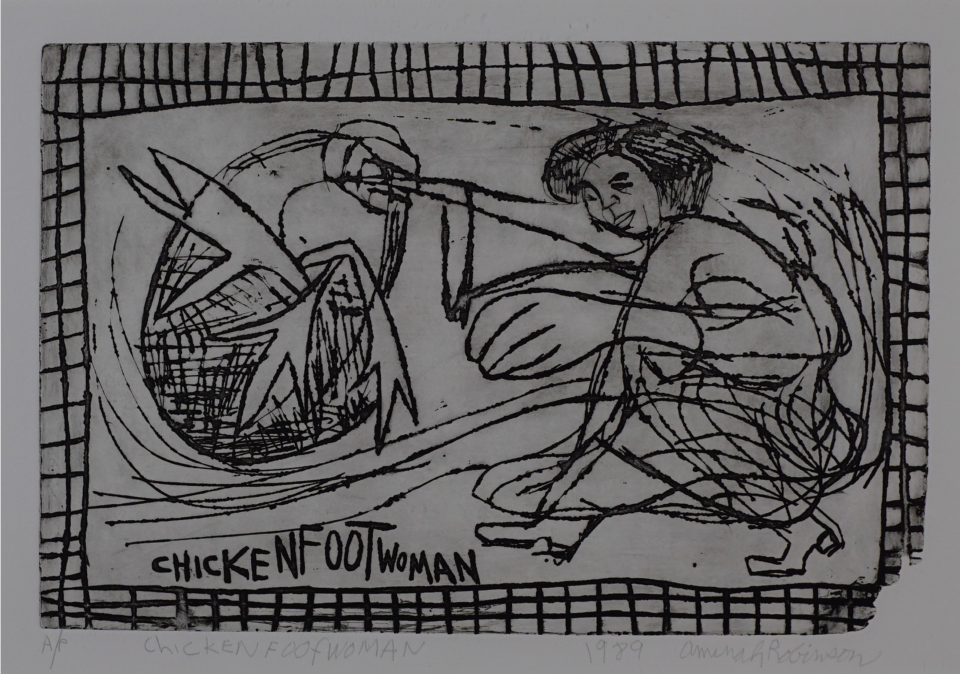
Black tap talent: 'Funny Girl' tour a dream for tap phenom who plays best buddy Eddie
Guest curator's background
Ellington, a former fashion professor at Kent State University who now runs her own business as a motivational speaker and diversity and inclusion expert, is a multidisciplinary artist whose background includes fashion design, theater and curation of four museum exhibitions. She was co-curator of "TEXTURES: the history and art of Black hair" at Kent State in 2021-22 and is currently on tour with her fifth book, "Black Hair in the White World."
She visited the Cochrans at their Georgia farm and stayed with them to enrich her work with their collection. As collectors, the Cochrans were considered ahead of their time, collecting works by African American artists in time periods when most art collectors were not, said museum Director and CEO Jon Fiume.
The Cochrans are everyday people — Wes a former bricklayer and Missy a former math teacher — who used any spare money they had since the 1970s to purchase their collection of more than 400 pieces of African American art.
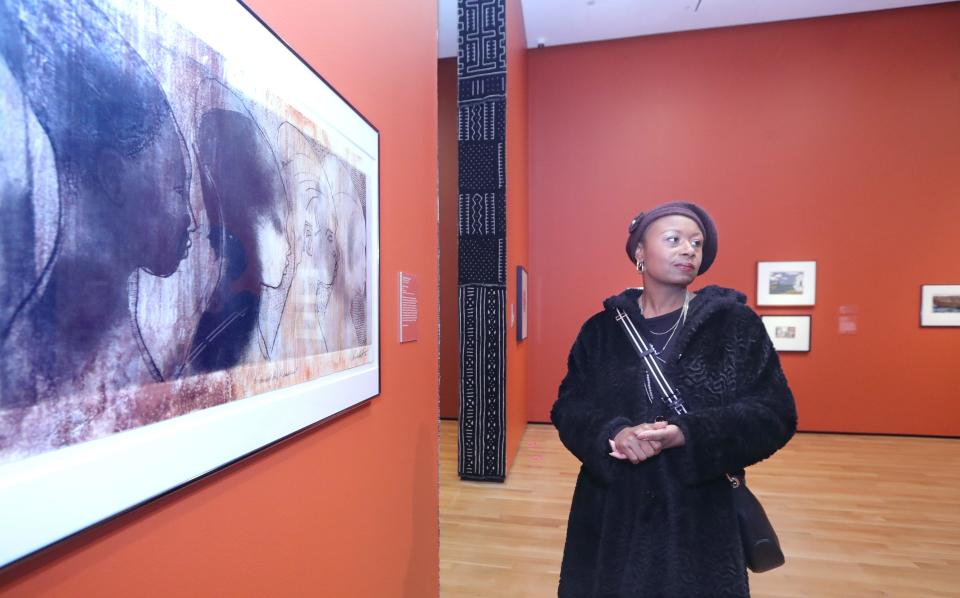
Racialization throughout history
An iconic piece in the show is "American Domestic" by Willie Cole, said museum Senior Curator Jeff Katzin. Inspired by Grant Wood's "American Gothic," the painting depicts two figures wearing Nigerian masks and holding an iron and ironing board rather than a pitchfork. The iron images are a play on words referring to both ironing clothing and to the god of iron, Ogun.
"Because this is called 'American Domestic,' it's basically putting in the face of the American people that Black people are the ones who really built up this economy, they are the ones who built up what we call United States," Ellington said.
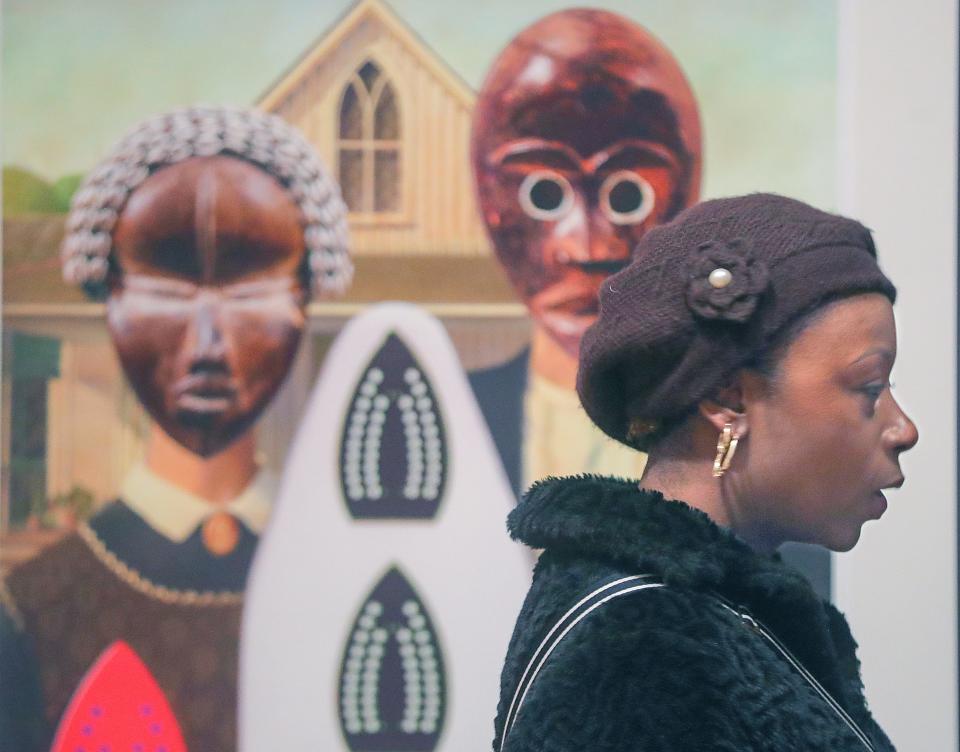
In Kent State University graduate Curlee Raven Holton's etching "Bred for Pleasure," he's created four profiles of women's faces that progressively fade across the paper. Many African women were forced to bear children with their enslavers so that the enslavers could have more free labor, Ellington said. The result was a loss of identity for both the women and the children they bore, who were descendants of their enslavers.
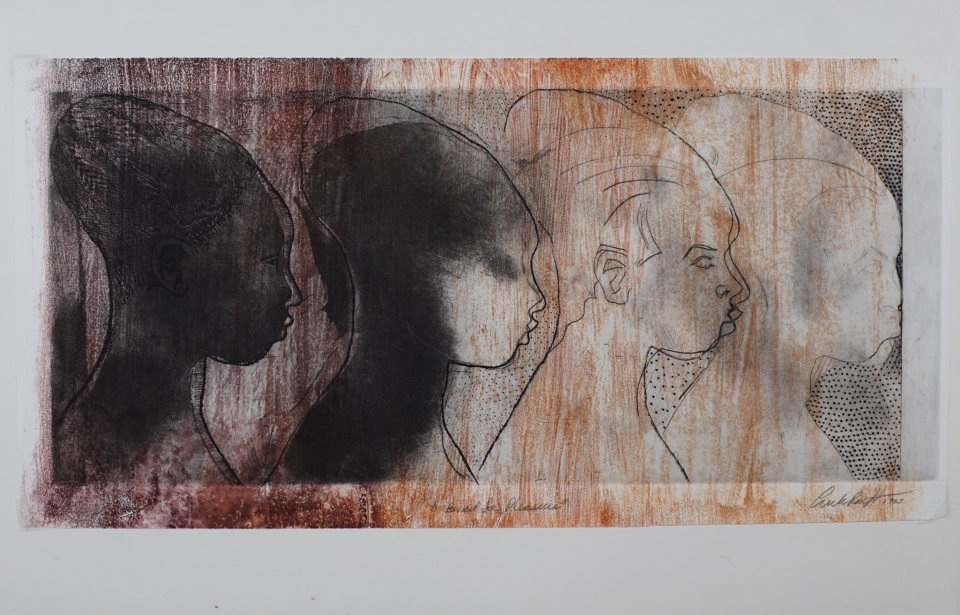
Resistance, from slave trade to today
African Americans' resistance comes from both fighting and being able to live their lives with agency and joy, Ellington said.
In "RETOLD," a highly dramatic piece by Jacob Lawrence, "Revolt on the Amistad," depicts the rebellion of Africans on board the Spanish ship, a revolt that led to the Supreme Court case United States v. Amistad and became a catalyst for the American abolitionist movement. The work, which shows slaves fighting the crew, is part of Lawrence's series on Toussaint L'Ouverture, who was born a slave and was a leader of the 1791 Haitian revolution against the French.
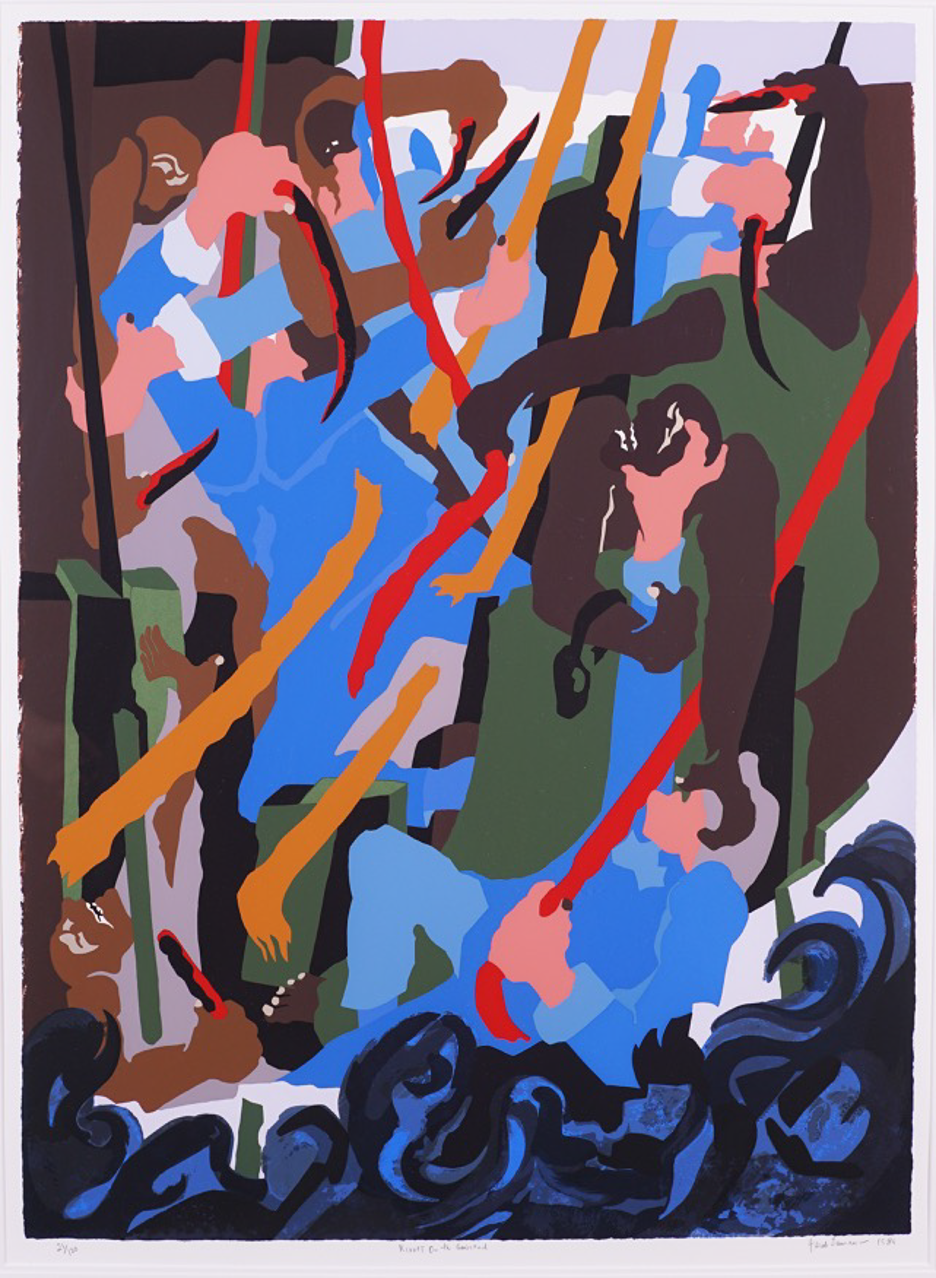
"Black joy" − a term that came about amid the social unrest in the wake of George Floyd's murder in 2020 − is a major part of African American resistance, the guest curator said. It's manifested in African Americans' autonomy in marrying, forming their own families and having the agency to pursue the careers and artistic endeavors they want − all things enslaved African Americans were unable to do.
Throughout the exhibit, artwork depicting African Americans' work in music, dance and theater illustrate their history of resistance through Black joy.
Black joy is a weapon against racialization that's also found through religion and creating joy in community, including within African American communities of shacks that came about as a result of redlining.
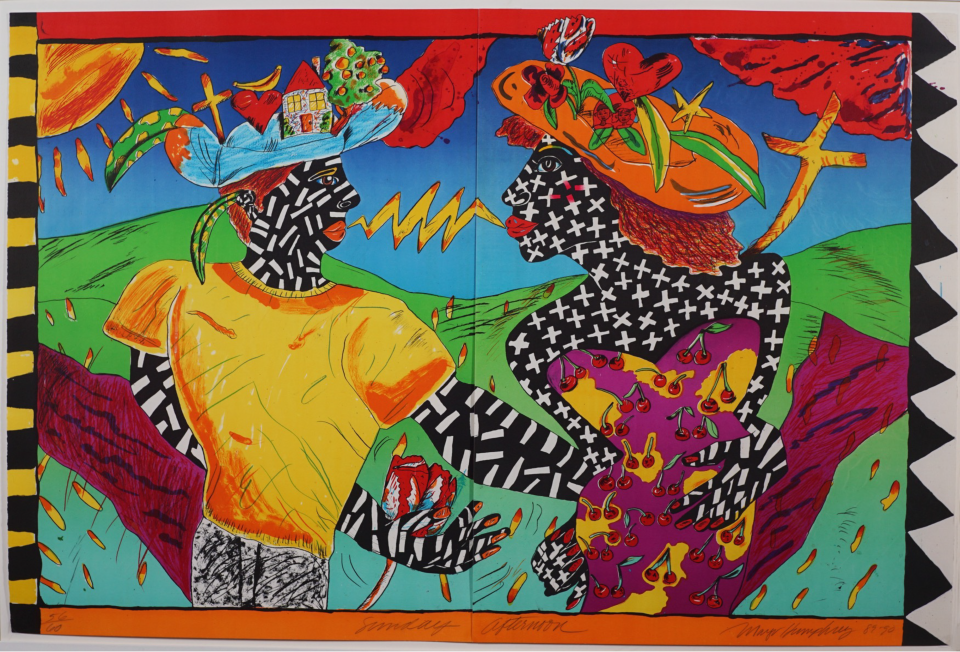
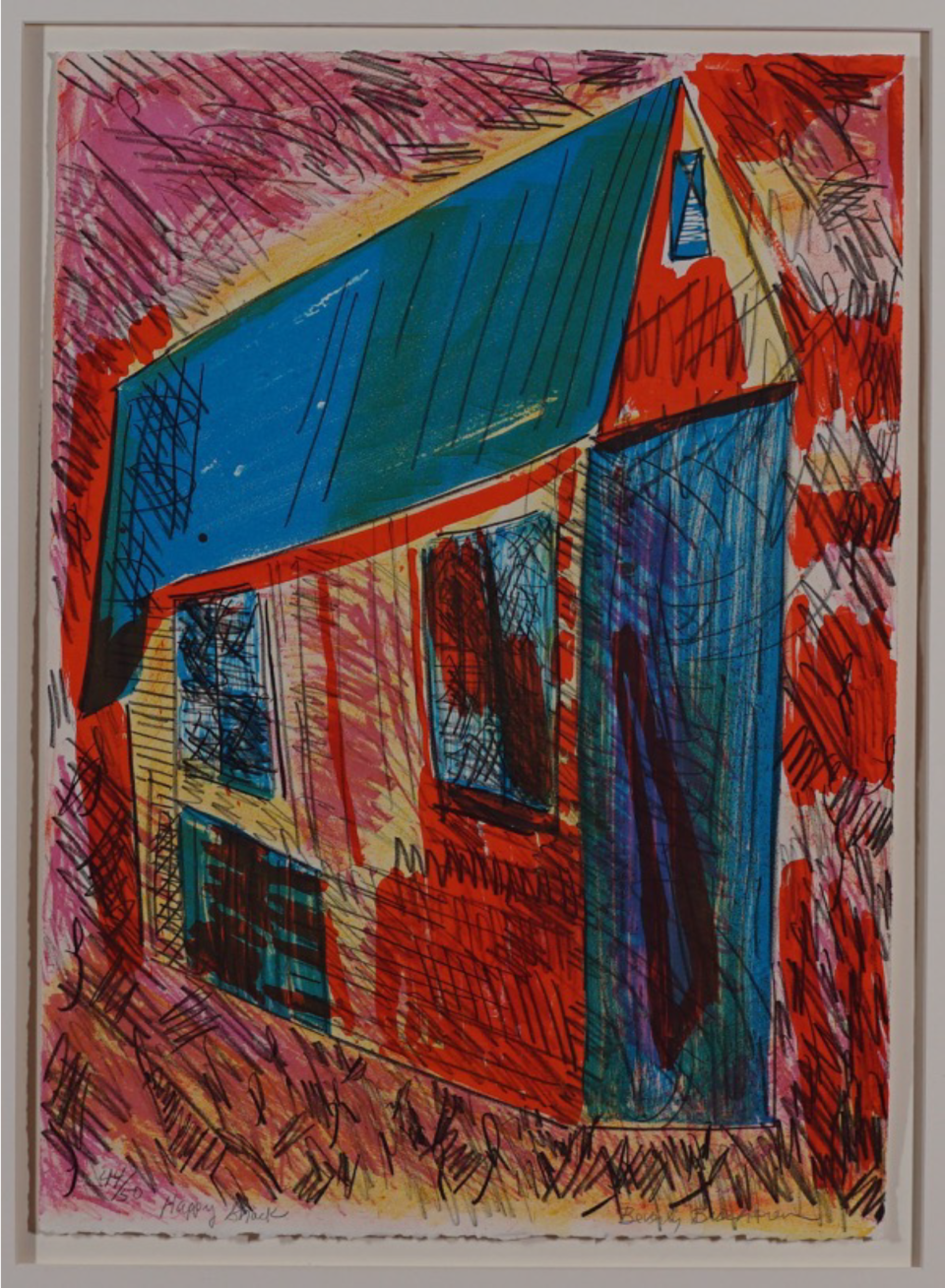
Working on "RETOLD" has changed Ellington in numerous ways, she said, including inspiring her to begin collecting art on her own.
"I was so inspired by Wes and Missy [Cochran], I started collecting, so I've already purchased three pieces of [African American artwork] so far," she said.
Arts and restaurant writer Kerry Clawson may be reached at 330-996-3527 or kclawson@thebeaconjournal.com.
Details
Exhibit: RETOLD: "African Art and Folklore"
Where: Akron Art Museum, 1 S. High St., Akron
When: Continuing through March 24, 11 a.m. to 5 p.m. Wednesday and Friday-Sunday, 11 a.m. to 9 p.m. Thursday
Cost: Member admission free. Non-member general admission $12; senior citizens $10; students $8; University of Akron students, faculty and staff free; children 17 and under free. Gallery admission free every Thursday
Information: akronartmuseum.org, 330-376-9186
This article originally appeared on Akron Beacon Journal: 'RETOLD: African American Art & Folklore' at Akron Art Museum through March

